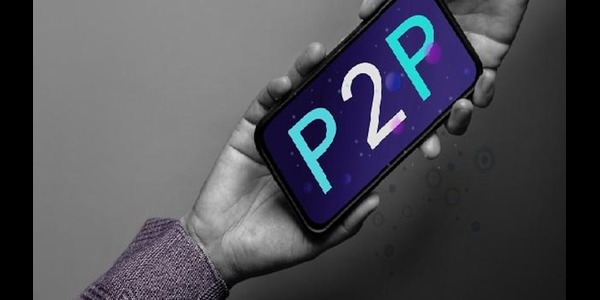Description
In the rapidly evolving world of digital transactions, Peer-to-Peer (P2P) apps have become a cornerstone of financial and data exchange. These applications offer users the ability to transfer money, share files, and communicate directly, bypassing traditional intermediaries. However, with the convenience of P2P app comes the critical concern of safety and privacy. This blog delves into the various safety and privacy features embedded in P2P apps, scrutinizing which features are essential, which are optional, and which ones might be conspicuously absent. Using insights from the recent analysis on OrbitNapp, we aim to provide a comprehensive understanding of the safeguards that protect users in the P2P ecosystem. Join us as we navigate through encryption protocols, user authentication, transaction monitoring, and more to help you make informed decisions about the P2P apps you use.
In today’s digital age, Peer-to-Peer (P2P) apps have revolutionized the way we conduct transactions, communicate, and share information. Whether it’s splitting a dinner bill with friends, sending money to family abroad, or sharing large files quickly and efficiently, P2P apps provide a seamless and direct way to connect users. However, the rise in P2P app usage has also brought about significant concerns regarding safety and privacy. It is crucial to understand what safety and privacy features are typically included in these apps and which ones might be missing, potentially exposing users to risks.
The Core Safety and Privacy Features of P2P Apps
1. Encryption
Encryption is one of the foundational safety features of any P2P app. It ensures that the data transmitted between users is scrambled and can only be deciphered by the intended recipient. This protects sensitive information from being intercepted by malicious entities.
End-to-End Encryption (E2EE): This type of encryption guarantees that only the communicating users can read the messages. Even the service provider cannot access the encrypted data. Many P2P apps boast E2EE to assure users of the highest level of privacy.
In-Transit and At-Rest Encryption: Besides E2EE, data should be encrypted both when it is being transmitted (in-transit) and when it is stored (at-rest) on servers. This dual-layered encryption adds another level of security.
2. User Authentication
Robust user authentication mechanisms are critical for ensuring that only authorized users can access their accounts. P2P apps typically employ several authentication methods:
Multi-Factor Authentication (MFA): MFA adds an extra layer of security by requiring users to provide two or more verification factors to gain access to their accounts. This could be something they know (password), something they have (smartphone), or something they are (fingerprint).
Biometric Authentication: Features such as fingerprint scanning or facial recognition provide convenient and secure ways for users to verify their identities.
3. Secure User Interface
A secure and intuitive user interface is essential to protect users from phishing attacks and fraudulent activities. P2P apps should ensure that their interfaces are designed to prevent accidental sharing of sensitive information.
Phishing Protection: Implementing features that detect and block phishing attempts can help protect users from deceptive practices aimed at stealing their credentials.
Transaction Verification: Providing users with the ability to verify transactions before they are completed can prevent unauthorized transfers and mistakes.
Commonly Absent Safety and Privacy Features
Despite the numerous safety features available, not all P2P apps include every possible safeguard. It’s important to be aware of some features that might be missing:
1. Comprehensive Fraud Detection
While many P2P apps have basic fraud detection mechanisms, comprehensive fraud detection that uses artificial intelligence and machine learning to identify and prevent fraudulent activities is not always present. Advanced systems can analyze patterns and detect unusual behavior, but these features can be costly and complex to implement.
2. Transparent Privacy Policies
Transparent and clear privacy policies are essential for users to understand how their data is being used and protected. Unfortunately, some P2P apps have vague or difficult-to-understand privacy policies, leaving users uncertain about their data’s safety.
3. Regular Security Audits
Regular security audits conducted by third-party experts can help identify and rectify vulnerabilities in P2P apps. However, not all apps undergo such rigorous evaluations, which can leave them susceptible to security breaches.
4. Data Anonymization
Data anonymization techniques that ensure user data cannot be traced back to an individual are sometimes lacking. Without this feature, even encrypted data might pose privacy risks if accessed by unauthorized parties.
Enhancing Safety and Privacy in P2P Apps
To enhance the safety and privacy of P2P apps, developers and service providers should focus on implementing and maintaining robust security measures. Here are some recommendations:
1. Regular Updates and Patch Management
Keeping the app and its underlying infrastructure updated with the latest security patches is crucial. Regular updates can address newly discovered vulnerabilities and enhance overall security.
2. User Education and Awareness
Educating users about best practices for maintaining their safety and privacy can significantly reduce the risk of security breaches. This includes advising users on creating strong passwords, recognizing phishing attempts, and understanding the importance of privacy settings.
3. Transparent Communication
Clear and transparent communication regarding security practices and any incidents that occur can build trust with users. Providing regular updates on security enhancements and being upfront about potential risks can help users feel more secure.
4. Collaboration with Security Experts
Collaborating with cybersecurity experts to conduct regular audits and assessments can help identify potential vulnerabilities. This proactive approach can prevent security issues before they impact users.
Conclusion
The convenience and efficiency of P2P apps are undeniable, but so are the potential risks associated with their use. Understanding the safety and privacy features that are included in these apps, as well as those that are often missing, is crucial for users to make informed decisions. By prioritizing encryption, robust authentication, secure interfaces, and other key features, P2P app developers can enhance user trust and security. Meanwhile, users should remain vigilant, stay informed about the security measures in place, and advocate for better safety and privacy practices in the apps they use.
